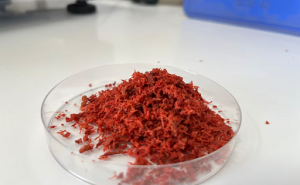
For those considering on-farm dairy processing as an option, Cornell University hosted a May 25 webinar to outline that strategy’s potential to improve profitability.
But like any business venture, processing products isn’t a guaranteed win.
“Everybody comes to value-added dairy processing with hopes and dreams and excitement,” said Katelyn Walley-Stoll, a Cornell Extension farm business management specialist. “We don’t want to entirely crush those hopes and dreams, but we do want to give you a heavy dose of reality that there’s a lot of risk involved.”
Underestimating the investments required to make a new venture successful is among the dangers.
“This takes a lot of time and a lot of money to start up,” Walley-Stoll said.
Much of that time will be dedicated to marketing, which may be unfamiliar territory for some dairy farmers.
“One of the things about marketing is that many farmers haven’t really had to do much marketing, personally,” said Anika Gianforte, a Cornell Extension dairy processing specialist.
But if a farmer is serious about taking on processing, promoting the products is essential to success.
Gianforte said the old adage of “if you build it, they will come” is a myth, and simply producing dairy products isn’t enough.
For marketing to aid profitability, Gianforte said farmers need to consider the four P’s — product, place, price and promotion.
Farmers should consider the ease of producing a product, the demand for that product, and any related regulations.
Regarding “place,” Gianforte said considering the logistics of getting your product from point A to point B is important.
Farmers also need to consider how much they’re willing to spend to produce the product and promote it to stores and consumers.
In addition to all the marketing necessities, farmers have to produce a good-tasting product.
Cornell offers programs for basic and advanced food processing certificates, Gianforte said. But while training is helpful, making a product that consumers enjoy is the top priority.
“Getting recipes right takes effort and knowledge,” Gianforte said.
Processors also have to be cognizant of food safety regulations.
If you’re producing a safe, tasty product, marketing will be an easier task, Gianforte said.
So, is the risk worth the reward?
“Milk prices are really volatile,” Walley-Stoll said, “and, to an extent, with selling your own products, you can set your own price.”
Incorporating on-farm processing also opens the door to agritourism, adds another business venture to help with transitioning to the next generation, increases community food access, opens new markets, and, if done right, results in greater profits.
But before diving into on-farm processing, first commit to budgeting properly, getting the necessary training, and fully understanding the regulations.
Gianforte said there are resources to help with all of these steps.
Cornell will host a final on-farm dairy processing webinar on June 8. Register at bit.ly/OnFarmDairy.























